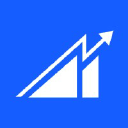A power outage in July 2025 in the Czech Republic has prompted a renewed focus on the vulnerabilities within European energy infrastructure. The failure of a high-voltage transmission line resulted in more than 800,000 households losing power, causing widespread disruptions to transportation, healthcare, and emergency services. This incident highlights systemic issues similar to those observed during Spain’s blackout earlier in 2025 and a substation fire at Heathrow Airport, both of which raised alarms about grid stability across Europe.
The outage in the Czech Republic, caused by the collapse of the V411 transmission line, revealed critical weaknesses in the grid, specifically aging infrastructure and a lack of redundancy. Eight major substations experienced failures, leaving Prague dependent on a single backup substation in Řeporyje. While five substations were restored quickly, three others remained offline for an extended period, exposing the inadequate backup systems for essential services like hospitals and transport hubs.
In response, the Czech government has mobilized its Central Crisis Staff and instructed utility companies to expedite grid upgrades. ČEZ, the largest power generator in the Czech Republic, is spearheading a €400 million modernization initiative supported by a loan from the European Investment Bank (EIB). This project aims to implement remote-controlled substations for improved fault isolation, integrate 5.5 GW of renewable energy capacity by 2026, and deploy smart grid technologies that allow for real-time monitoring.
The challenges faced by the Czech grid are symptomatic of broader European risks. Spain’s blackout in April 2025 was driven by voltage control failures in a grid heavily reliant on renewable sources, with renewables contributing 71% of its energy mix. Similarly, the March 2025 Heathrow substation fire underscored the dangers of dependence on single points of failure, leading to a 24-hour shutdown that incurred costs of £1.2 billion.
These incidents have led to regulatory changes aimed at bolstering grid resilience. In Spain, authorities mandated all generators, including renewable sources, to contribute to voltage control and accelerated the deployment of battery storage systems. In the UK, Ofgem has initiated an investigation into maintenance failures by National Grid, pushing for asset audits and redundancy upgrades through the Smart Secure Electricity Systems (SSES) Programme.
As a result of intensified regulatory scrutiny, utilities and infrastructure firms are now compelled to meet stricter standards for grid resilience. The European Union’s Network Code on Cybersecurity (NCCS) and Critical Infrastructure Resilience Directive require utilities to implement real-time threat detection systems, ensure 24/7 backup for critical infrastructure, and diversify energy sources and grid pathways. This shift is expected to create a $150 billion market for grid modernization and cybersecurity solutions across Europe by 2026, according to estimates from the EU’s RePowerEU initiative.
Investors are eyeing opportunities in companies positioned to benefit from this wave of infrastructure spending. For instance, ČEZ stands to gain from its ongoing modernization project, while Iberdrola in Spain has formed partnerships to enhance its grid cybersecurity measures, leading to a 22% increase in stock value in 2024.
Cybersecurity firms like Darktrace have also seen growth, reporting a 40% revenue increase in 2024 due to demand for AI-driven threat detection systems that many European transmission operators now use. Other companies, such as Impresoft, focus on grid-specific cybersecurity, safeguarding significant portions of Italy’s transmission network as the country aims for a 50% renewable energy target by 2030.
In addition, companies specializing in substation and smart grid technology, such as Schneider Electric, which provides IoT-enabled transformers to 60% of EU utilities, and OrxaGrid, known for stabilizing high renewable penetration grids, are also positioned to benefit from increased infrastructure investment.
However, there are risks to consider, including potential regulatory delays that could hinder project timelines, supply chain constraints affecting costs, and geopolitical risks associated with energy infrastructure, which remains vulnerable to hybrid threats like cyberattacks.
The recent outages in the Czech Republic and Spain, along with the Heathrow incident, have underscored the urgent need for robust grid resilience. Investors are advised to focus on companies that are well-positioned to capitalize on the anticipated €150 billion investment in grid modernization and cybersecurity across Europe.



